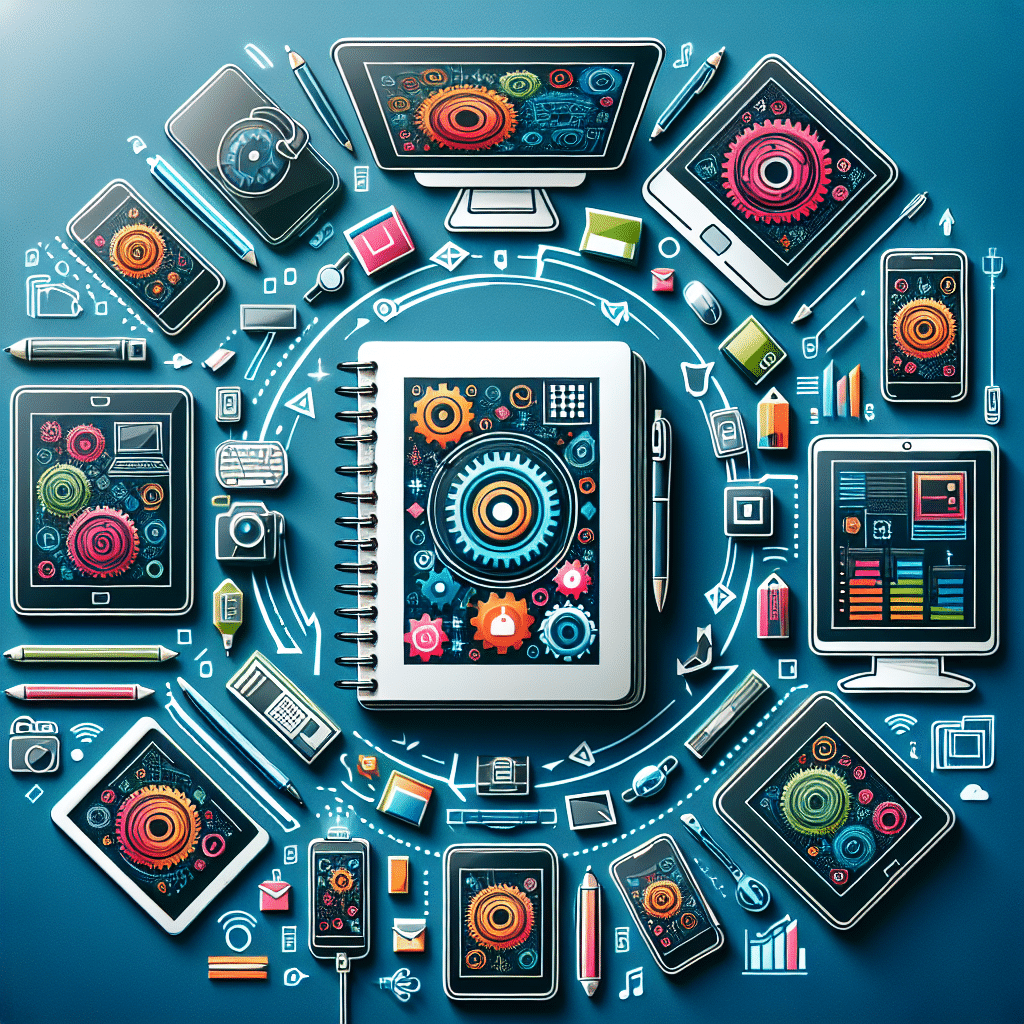Understanding Smart Notebooks
Smart notebooks are innovative tools that combine traditional note-taking with digital technology, enabling users to capture their thoughts in a tactile format while also preserving and sharing them electronically. Several brands dominate the market, each featuring distinct capabilities, such as cloud connectivity, voice recognition, and customizable templates.
Choosing the Right Smart Notebook
When integrating a smart notebook with devices, start by selecting one that suits your needs. Popular options include:
- Rocketbook: Uses synthetic paper that can be cleaned with a damp cloth and offers multiple cloud storage options.
- Moleskine Smart Writing Set: Combines a digital pen with specially designed paper to convert handwritten notes into digital format.
- EVERNOTE Smart Notebook: Focuses on seamless integration with the Evernote app.
Consider factors such as compatibility with your devices, syncing capabilities, and specific functionalities.
Required Equipment
Before integrating, confirm you have the necessary equipment:
-
Smart Notebook: Ensure it’s charged and functioning properly.
-
Device: A smartphone, tablet, or computer with internet connectivity.
-
Apps: Download the application corresponding to your notebook for optimal functionality. Common apps include:
- Rocketbook’s app
- Moleskine’s app
- Notes app for Evernote notebooks
Integration Setup
Follow these detailed steps for smooth integration of your smart notebook with your devices:
Step 1: Downloading and Installing the App
- Access App Store: Visit the Google Play Store (Android) or Apple App Store (iOS).
- Search: Type the name of your smart notebook’s app in the search bar.
- Install: Follow the prompts to install the application on your chosen device.
Step 2: Connecting Your Notebook
Once the app is installed, connect your smart notebook:
- Log In/Sign Up: Open the app and log in or create a new account.
- Device Settings: Go to “Settings” within the app to enable Bluetooth if necessary.
- Prepare the Notebook: Ensure your smart notebook is set up correctly—this often means having a unique QR code or marker.
- Connect to Device: Follow on-screen instructions to pair the notebook with your device, ensuring all settings align with preferences for data syncing.
Step 3: Writing and Scanning
To capture your notes efficiently:
- Write as Usual: Utilize the included pen for writing in your smart notebook, following any guidelines provided by the manufacturer for optimal results.
- Scan Documents: Depending on the notebook, you may need to scan pages through the app to convert your notes digitally. Align your notebook pages as indicated in the app and hit “Scan” or “Capture” after writing.
Step 4: Syncing Your Notes
After writing:
- Sync Manually: Some apps may require manual syncing. Use the “Sync” button to upload your notes to the cloud or your desired storage option.
- Cloud Integration: If your notebook supports cloud storage, integrate it into services like Google Drive, Dropbox, or Evernote to access notes from any device. Configure these settings in the app.
Step 5: Organizing Your Notes
Post-synchronization, organize your notes for efficient retrieval:
- Tagging: Use tags or categories provided by the app to label your notes for easy searching.
- Folders: Create folders within the app for different subjects or project types, organizing your notes based on relevance or urgency.
- Search Functionality: Familiarize yourself with search functions, allowing you to pinpoint specific topics quickly.
Troubleshooting Common Issues
Should obstacles occur while integrating smart notebooks, consider these solutions:
-
Connectivity Problems:
- Restart both your device and the smart notebook.
- Check for updates in the app and install them if available.
-
Sync Failures:
- Ensure cloud storage settings are correctly configured.
- Re-link your account to resolve syncing discrepancies.
-
Difficulties in Writing Recognition:
- Confirm you are using the correct writing instrument as specified by the notebook manufacturer.
- Ensure good lighting when capturing notes digitally.
Enhancing Your Experience
To maximize the benefits of using smart notebooks:
- Utilize Templates: Many apps provide pre-designed templates for various activities such as brainstorming, to-do lists, or meeting notes.
- Voice-to-Text Features: Some notebooks come with voice recognition. Use this feature to dictate notes directly into your app, which can then be edited later.
- Collaboration Tools: If working in teams, leverage collaboration features that allow multiple users to access, edit, and comment on shared notes in real-time.
Security Measures
When dealing with sensitive information:
- Password Protection: Enable password protection in both the app and any cloud services.
- Review Privacy Settings: Understand data usage policies of the notebook’s app and cloud storage solutions.
- Backup Regularly: Always maintain backups of your digital notes in multiple locations to prevent data loss.
Conclusion
Using smart notebooks alongside your devices can streamline information capture and organization processes. By choosing the right product, connecting it appropriately, organizing your notes, and troubleshooting effectively, you can enhance your productivity and creativity. Take proactive steps to integrate these tools seamlessly into your daily life, transforming how you approach learning, brainstorming, and note-taking.
